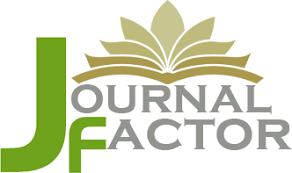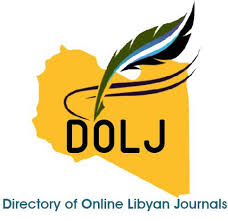Comparison between Unstructured oral examination "UOE" and Objective Structured oral examination "OSOE" in department of fixed prosthodontics/dental faculty university of Tripoli
DOI:
https://doi.org/10.54361/Keywords:
oral exam, fixed prosthodontics, structured oral examAbstract
Aim: the aim of this study was to compare reliability of two different oral exam examinations commonly used alternatively in Dental school of Tripoli university (Objective Structured Oral Exam, and Unstructured Practical Oral exam.). Methodology: The method that has been adapted in this study were clinical and self-structured questioner, and statistically a descriptive and inferential statistical analyses was used, the relative variation,Pearson's correlation test, and "ICC" i.e. Interclass Correlation Coefficient respectively…i.e. quantitative, descriptive correlation study, Result: the inferential statistical analyses yielded a “coefficient of variation” value for R1U and R2U and for R1S and R2S as (28.455, 34.930) and (10.870, 16.028) respectively. Cronbach's alpha reliability was found (0.455) for R1U and R2U raters and (0.951) and was (0.463)R1U and R2U, and for R1S and R2S was significant (P0.001) with value of (0.951 which rated excellent). Bivariate correlation was significant and with value of (0.906test for Structured oral exam, and was not significant with value of (0.054) for unstructured oral. Conclusion: We concluded that the Structured oral exams is more reliable than unstructured oral exam.
Downloads
References
Topping, K. (1998). Peer assessment between students in Colleges and Universities. Review of Educational esearch, 68, 249-276.
Orsmond, P., Merry, S., & Reiling, K. (1996). The importance of marking criteria in the use of peer assessment. AssessmentandEvaluationin HigherEducation, 21(3), 239-250
Orsmond, P., Merry, S., & Reiling, K. (2000). The use of student derived marking criteria in peer and self- assessment. AssessmentandEvaluationinHigher Education, 25(1).
Cross, K. P. “Classroom Research: Helping Professors Learn More about Teaching and Learning.” In P. Seldin (ed.), How Administrators Can Improve Teaching: Moving from Talk to Action in Higher Education. San Francisco: Jossey- Bass, 1990.
Hughes, Arthur. (2000). Testing for Language Teachers. Beijing: Foreign Language Teaching and Researching Press.
Pearce G, Lee G. Viva voce (oral examination) as an assessment method insights from marketing students. J Mark Educ 2009; 31:120-30.
Downloads
Published
Issue
Section
License
Copyright (c) 2018 Dr. Hussein S. GHIRRI, Dr. Amina Rajab Elsalhin , Dr Milad M Elshah (Author)

This work is licensed under a Creative Commons Attribution-NonCommercial-NoDerivatives 4.0 International License.
Open Access Policy
Libyan journal of medical Research (LJMR).is an open journal, therefore there are no fees required for downloading any publication from the journal website by authors, readers, and institution.
The journal applies the license of CC BY (a Creative Commons Attribution 4.0 International license). This license allows authors to keep ownership f the copyright of their papers. But this license permits any user to download , print out, extract, reuse, archive, and distribute the article, so long as appropriate credit is given to the authors and the source of the work.
The license ensures that the article will be available as widely as possible and that the article can be included in any scientific archive.
Editorial Policy
The publication of an article in a peer reviewed journal is an essential model for Libyan journal of medical Research (LJMR). It is necessary to agree upon standards of expected ethical behavior for all parties involved in the act of publishing: the author, the journal editorial, the peer reviewer and the publisher.
Any manuscript or substantial parts of it, submitted to the journal must not be under consideration by any other journal. In general, the manuscript should not have already been published in any journal or other citable form, although it may have been deposited on a preprint server. Authors are required to ensure that no material submitted as part of a manuscript infringes existing copyrights, or the rights of a third party.
Authorship Policy
The manuscript authorship should be limited to those who have made a significant contribution and intellectual input to the research submitted to the journal, including design, performance, interpretation of the reported study, and writing the manuscript. All those who have made significant contributions should be listed as co-authors.
Others who have participated in certain substantive aspects of the manuscript but without intellectual input should only be recognized in the acknowledgements section of the manuscript. Also, one of the authors should be selected as the corresponding author to communicate with the journal and approve the final version of the manuscript for publication in the LJMR.
Peer-review Policy
- All the manuscripts submitted to LJMR will be subjected to the double-blinded peer-review process;
- The manuscript will be reviewed by two suitable experts in the respective subject area.
- Reports of all the reviewers will be considered while deciding on acceptance/revision or rejection of a manuscript.
- Editor-In-Chief will make the final decision, based on the reviewer’s comments.
- Editor-In-Chief can ask one or more advisory board members for their suggestions upon a manuscript, before making the final decision.
- Associate editor and review editors provide administrative support to maintain the integrity of the peer-review process.
- In case, authors challenge the editor’s negative decision with suitable arguments, the manuscript can be sent to one more reviewer and the final decision will be made based upon his recommendations.













